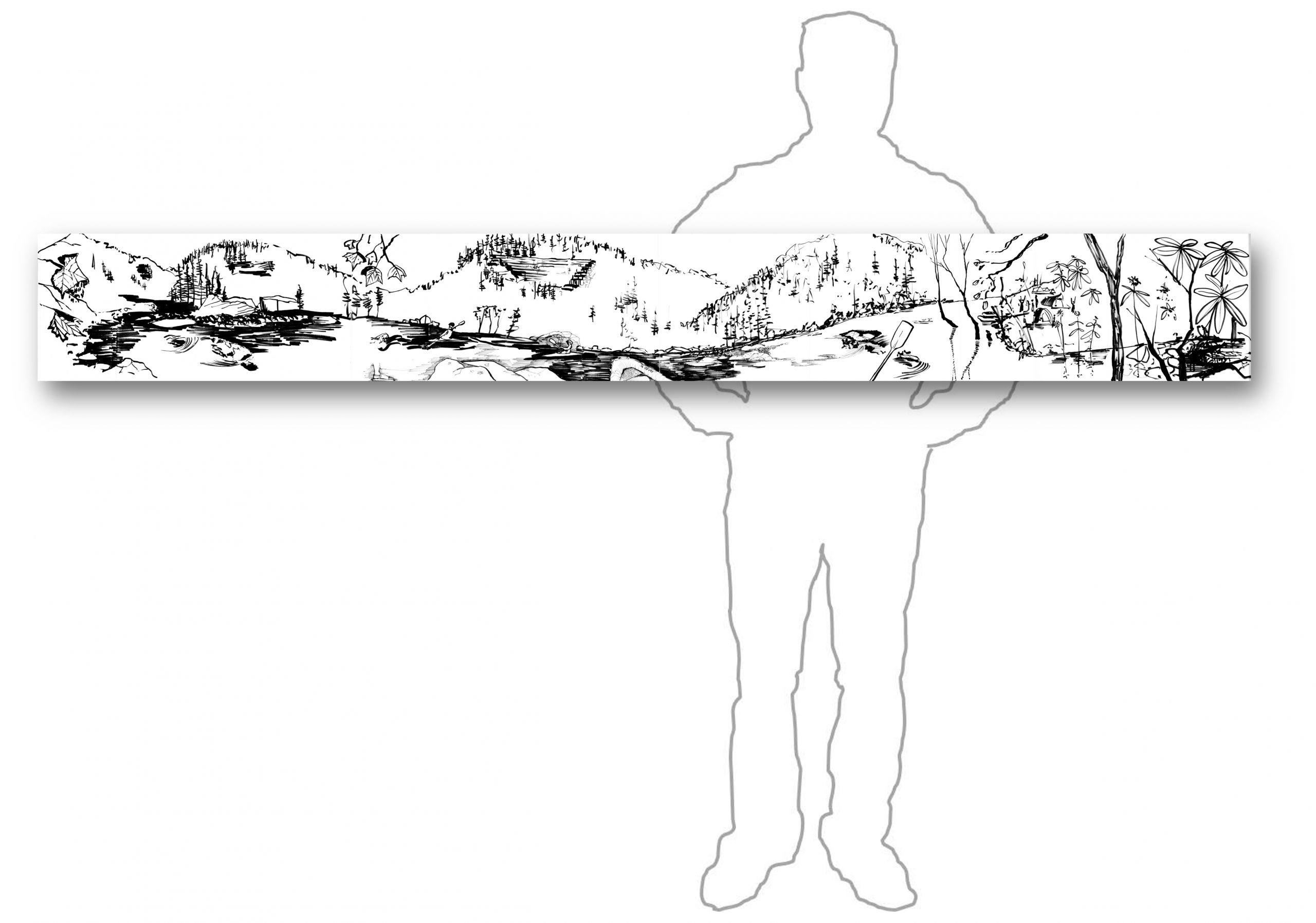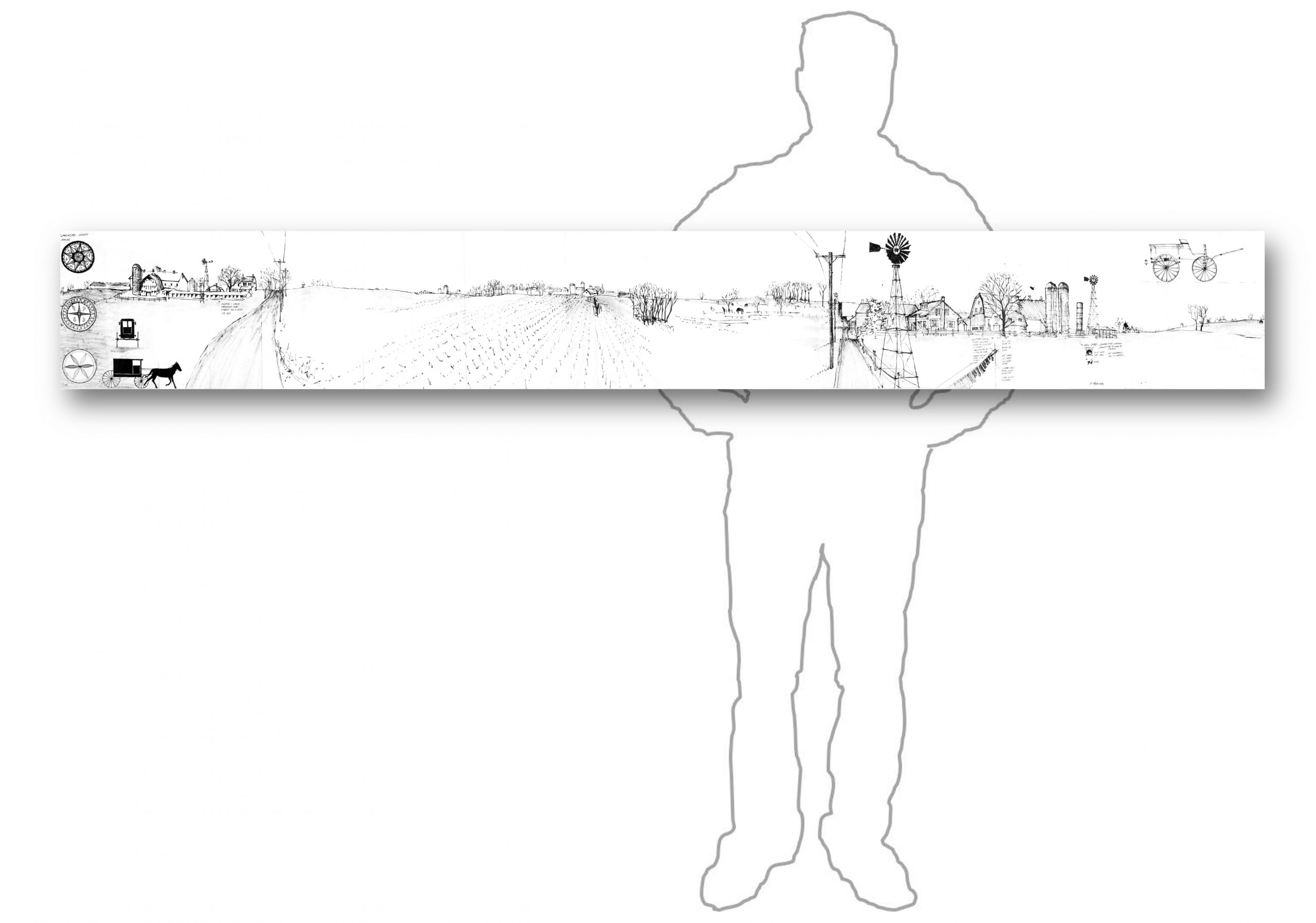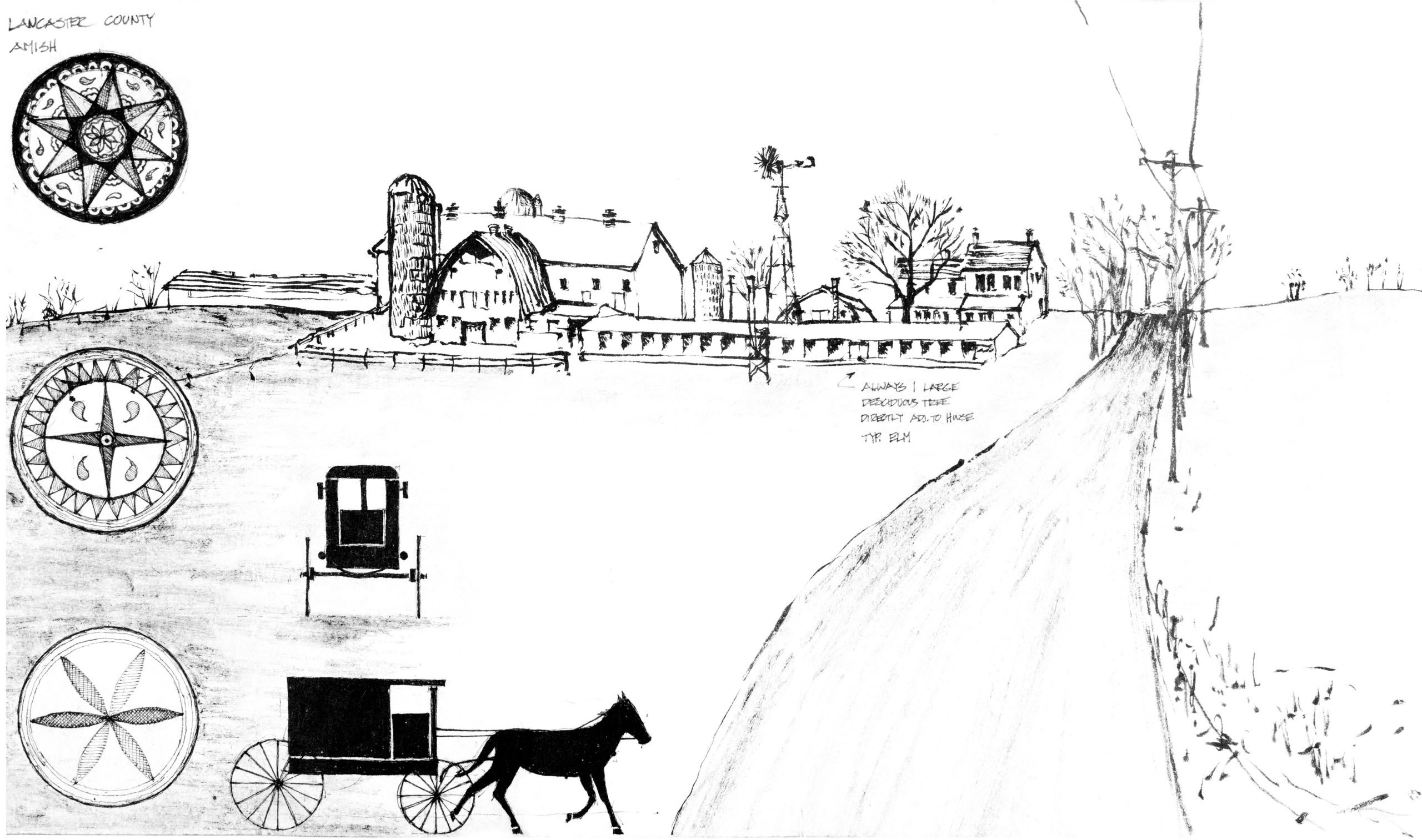7.44.USA-11-detail-a Gauley River, West Virginia Highlights Relevant to Sustainable Design:
Experience the power of nature firsthand.
I was invited on a whitewater rafting trip. The experience was incredible because we scheduled the trip just after the hydroelectric dam of the Gauley River[i] was opened up. So the water created a wild ride. We stopped along the way at a point in the river without all of the rapids, which gave me just enough time to sketch the scene and record some of the vegetation.
Experiencing the power of nature firsthand has helped me become a better steward of the environment. The power is evident in how the water has carved its way through the terrain for so many years. Gauley is one of the most popular whitewater runs in the eastern United States for advanced rafting. The river is the primary feature of the Gauley River National Recreation Area, and my sense of stewardship comes into play for a simple reason. I would like my children and future grandchildren to experience the thrill and awe that I felt.
The water was not always clean. Following the Industrial Revolution up into the first quarter of the twentieth century, Gauley was know as the “River of Ink” due to industrial pollution. The West Virginia State Wild Life League stepped in, and they were successful in obtaining funds to clean up the Gauley River in 1927. This is a positive example of advocacy in support of the common good and protection of natural resources.
The region also has some interesting post-Ice Age history. Dating back to around 10,000 BC, Paleoamericans possibly used the northern valleys leading to the Gauley River for their big-game hunting. Paleoamericans were the first people who entered the Americas during the final glacial episodes of the late Pleistocene period (2,588,000 to 11,700 BC).
Big-Game Hunting for Power: The US Army Corps of Engineers completed the Gauley River Dam in Summersville, West Virginia, in 1966, and in 2001, the power was harnessed for hydroelectricity to generate 80 megawatts (MW). One megawatt is equal to one million watts and powers at least 750 homes. So the Gauley River Dam can power about 60,000 homes. For context, the Hoover Dam is twenty-five times larger, generating over 2,000 MW and powering well over a million homes. According to the Energy Information Administration, hydropower accounted for 7 percent of US electric generation in 2013, representing 52 percent of renewable generation that year.[ii]
Natural power along with advocacy, recreation, and historic legacy can all serve as motivators for stewardship and sustainability.
7.45.USA-12-Horizontal-with-Figure
The figure outline in this image is for scale to illustrate the size of the fold-out field drawing. The descriptions of certain key elements and insights are included with the accompanying drawings in this section.

Author and illustrator: Charlie Szoradi is an architect, inventor, and the CEO of Independence LED Lighting. He writes about many other topics related to hydro power and the Gauley River Dam through his extensive travels around the world.
If you have found this posting online, it is an excerpt from Mr. Szoradi’s book Learn from Looking that served as the inspiring seed content for this drawing share resource. For additional drawings and insights on power production and the Gauley River, we hope that you enjoy exploring LearnfromLooking.com. You can search via general terms such as sustainability as well as narrower terms such as Gauley River, hydroelectric, Energy Information Administration, electric generation.
[i] Gauley River History: USA 11: Detail (a):
https://www.nps.gov/gari/learn/historyculture/a-timeline-of-gauley-river-history.htm
[ii] Hydropower: USA 11: Detail (a):
http://www.hydro.org/tech-and-policy/faq/.



